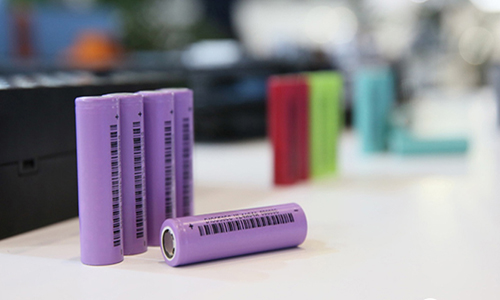Battery Thermal Management System–Definition and Impacts
May 19, 2020 Pageview:1249
Batteries have evolved over the past couple of years and are growing into much more efficient energy storage systems. The smallest of sizes are capable of providing large amounts of energy- densities that the large and traditional battery packs found it challenging to do. However, this improvement comes with its complexity. Battery models became sophisticated, and this created the need for various battery management systems to help regulate the power within these cells; thus, making them safer.
One of these BMS is the thermal battery management system, which deals with the thermal characteristics of the cells instead. These systems act as a safety measure for both the batteries and their users by preventing the cells from operating outside of their recommended and designed conditions. This guide takes you through the benefits of thermal management systems in batteries and the impacts they have on making the cells better.
What is a battery thermal management system?
A battery thermal management is an electronic device that manages the thermal conditions of a rechargeable battery by ensuring that it operates within the required conditions. They can either be passive or active, and the cooling medium used can be either liquid, air or even some form of phase change.
How are lithium-ion batteries cooled?
Lithium-ion battery packs have different methods of cooling, depending on the method that best fits your battery pack. Therefore, choosing the right cooling method for your battery pack helps keep the temperature at an optimal range of about 15°C to 35°C, which is crucial to maintaining the safety of these batteries as well as prolonging their service lives. For you to know the best type of cooling method, you need to make trade-offs among may factors like the costs, weight, complexity, and temperature uniformity.
There are four types of methods used to cool lithium-ion batteries, and they include:
Air cooling
Direct liquid cooling
Fin cooling
Indirect liquid cooling
A lithium-ion battery module with a large capacity and designed explicitly for EVs was used to provide correct evaluation results accurately.
1.Air cooling
There are two types of air-cooling lithium-ion batteries, and they include natural air cooling and forced air convection cooling. Since air is also the medium of heat transfer, it passes through the battery module to facilitate heating and cooling at the same time. However, the natural air-cooling method for lithium-ion batteries is considered ineffective and insufficient enough.
When it comes to forced-air cooling, the heat from the battery is removed through the exhaust fan using the wind that is generated by the rotating fan. When using this method, it is always advisable to increase the heat sink as well as the distance between the batteries.
Under natural air cooling, the radiation of heats makes up about 43 – 63% of the total dissipated heat. To reduce the maximum temperature, one can enhance the heat transfer, but the scope of doing so doesn't increase indefinitely. Air cooling has a few benefits, and they include:
Simple structure
Relatively smaller weight
Lower cost
Effective ventilation
No leakage of harmful gases
However, the heat exchange coefficient found between the wall surface and battery is relatively low, as well as the cooling and heating speeds.
2.Liquid cooling
Air cooling can meet the requirements needed to cool the lithium-ion battery when used in general conditions. However, in much more sophisticated conditions, liquid cooling is capable of only meeting the various thermal requirements of the battery pack. It involves immersing the battery module in a dielectric heat-transfer liquid. Liquid cooling also carries with it a few benefits and they include:
A high heat transfer coefficient between the wall surfaces of the battery pack
High cooling and heating speed as compared to air cooling
A much smaller volume
However, there can be the possibility of leakage of the gases found within the cells, the weight can be relatively large as compared to air cooling, and the maintenance is complicated. Air cooling would be sufficient enough for hybrid vehicles, while liquid cooling could suit pure electric vehicles. However, manufacturers tend to be reluctant about choosing liquid cooling because the seals on the batteries aren't good enough.
Air cooling has a much more significant influence on the temperature consistency of lithium-ion batteries while under different flow paths. However, the heat dissipation effect on the parallel flow path tends to be better than that of the series flow path.
Forced air cooling can only be comfortably used under small power and suitable conditions because the capacity of cooling isn't that strong. The liquid cooling effect is preferred for use under considerable power and complex conditions. For the future of battery thermal management, since the systems of these cells tend to be more complicated, liquid cooling seems to be the most favorable option.
How does a battery thermal management system impact a lithium battery?
Usually, the rate of degradation of a battery increases exponentially with the rise in temperature. Even though the capacity of the battery tends to increase with the rise in operating temperature, the rate at which the capacity fades also increases. However, poor battery performance is indicated at low operating temperatures. This can all be translated to the fact that uneven temperature rises within a battery system tend to reduce the lifespan of the cells.
Effective temperature management systems tend to contribute to prolonging the health of the battery majorly. As the capacity, charge and discharge rates of the battery increases, security issues require more attention and, therefore, a battery thermal management system is required. These thermal management systems are designed to meet the conditions and demand for faster charging, higher power, and improved battery performance.
Takeaway
A battery thermal management system is an ideal system that should be included in every battery to help deal with the common temperature issues that affect the cells during charging or discharging. Many incidents can take place because of inappropriate thermal regulation of the cells, and this thermal management system could just be the solution to all our needs.
- Prev Article: Battery Power Management–Reasons and Choices
- Next Article: 3.6V Rechargeable Lithium Ion Battery Pack Manufacturer
Leave Message
Hottest Categories
-
Hottest Industry News
-
Latest Industry News












